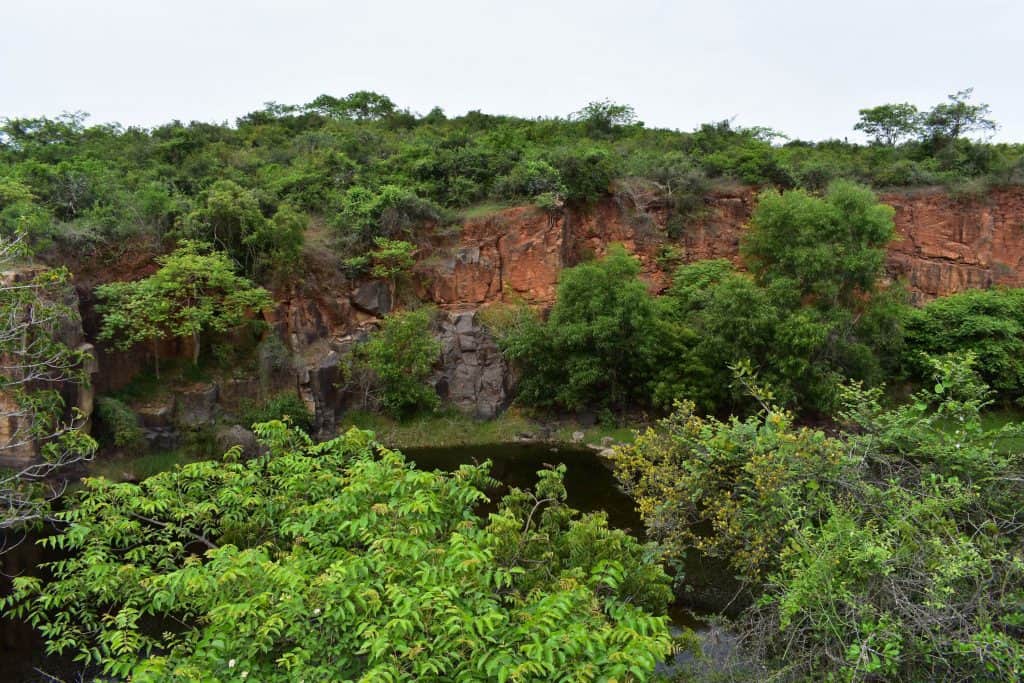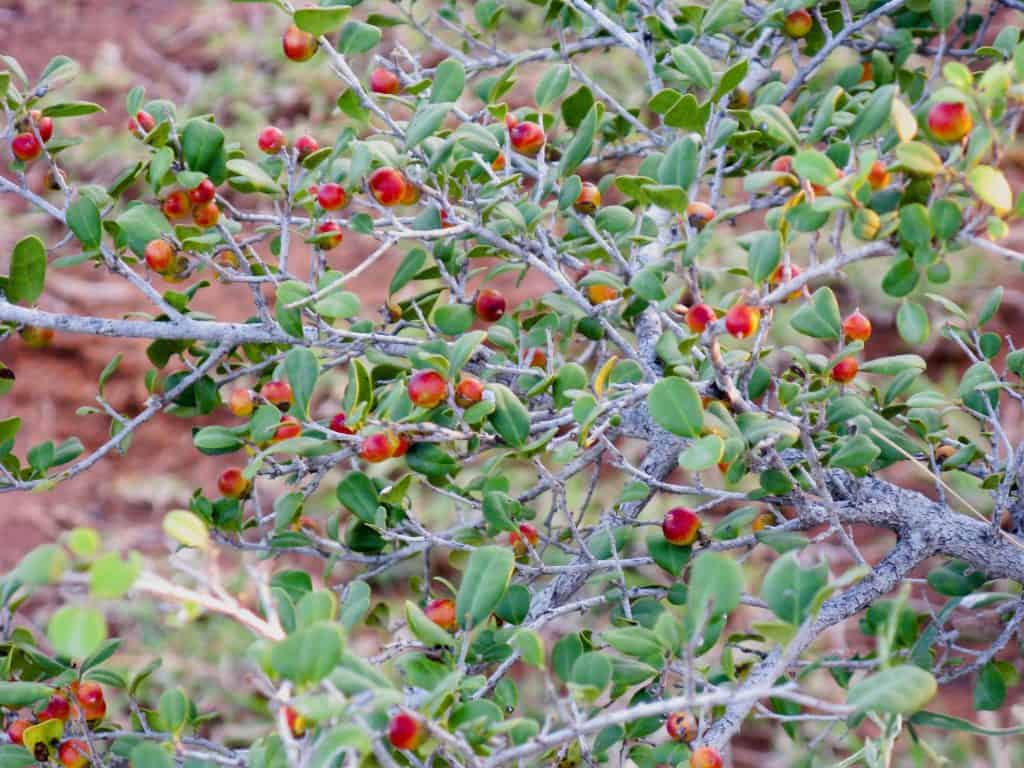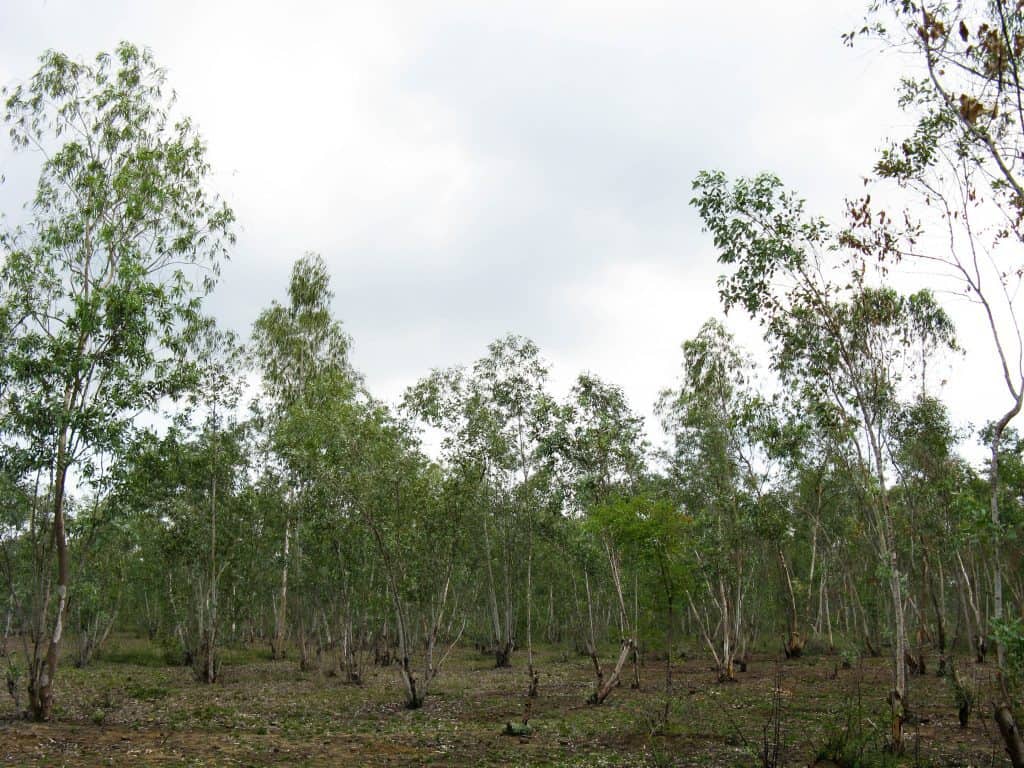Chennai is home to not just one, but two reserve forests – the Pallikaranai wetland and the Nanmangalam scrub forest. Located along the Tambaram-Velachery Main Road, the Nanmangalam Reserve Forest is among the last remaining havens of the ‘Vandalur scrub’, the original natural forest of this landscape.
While it might be difficult to tie the seemingly disparate scrub and forest together, the Tropical Dry Evergreen Forests (as they are also known) with their short, small leaved trees and thorny shrubs indigenous to South-East India are best equipped to survive the local climatic conditions.
The scrub and its diversity
Spanning around 320 hectares, the patchy vegetation of the Nanmangalam Reserve Forest thrives across hillocks and plains. While the plain landscape is dominated by thorny shrubs, thickets and grasslands, the thicker and woodier vegetation is found mostly in the hillocks bordering the reserve.
A study conducted by city-based biodiversity conservation organisation Care Earth Trust revealed the presence of 442 different species of flowering plants inside the Nanmangalam Reserve Forest alone. “The species diversity in Nanmangalam is phenomenal; it is the highest compared to any other patch of forest within city limits. The forest is home to some rare species of plants which are not seen anywhere in the vicinity,” says plant ecologist Muthu Karthick from Care Earth Trust.
The forest is home to 100-125 species of birds in addition to 40 different species of butterflies and close to 20 species of damselflies and dragonflies. Forest birds being very shy tend to nest far away from human habitations. As a logical extension, many of the birds spotted here in Nanmangalam are rarely to be seen elsewhere in the city, making this space a bird-watchers’ delight.
The Reserve Forest’s most famous inhabitant and star attraction is the great horned owl. “A ravine which was once a quarry used in the past for cleaning heavy vehicles now provides protection for these nocturnal predators,” remarks J Subramanean from Care Earth Trust.
As a general rule, the landscape is typified by small to medium sized birds characteristic of drylands. “Insectivorous birds such as bee-eaters and babblers are common-sight here. Smaller nectivores such as the sunbirds and fruit-eaters including mynas and bulbuls frequent the scrublands,” adds Wildlife Biologist Vinoth Balasubramanian from Care Earth Trust. In addition, many waterbirds, local migrants from the wetlands in the vicinity, continue to move in and out of the reserve on a regular basis.
Reclaiming lost lands
In the early 1960s, extensive portions of these scrublands were opened up for mining which massively affected the region’s diversity and ecological balance. The Tamil Nadu Forest Department took control of the area in 1974; mining has been banned since.
Abandoned quarries now serve as receptacles of rainwater, frequented by wild animals and cattle. The severe water crunch of 2017 saw the Chennai Metro Water Supply and Sewerage Board (CMWSSB) identify the quarries in Nanmangalam as potential sources for augmenting the city’s water supply. The plan, however, failed to take off.
Interestingly, Nanmangalam is one among the 23 megalithic sites within the Chennai metropolitan area. Stone-age burial sites, called cairns, dating back to the Neolithic times are found within the limits of the reserve forest.
Attempts to restore and rejuvenate the landscape are being taken up in earnest by the forest department. Decentralised water conservation projects and afforestation initiatives have been designed with an intention to minimise the impact of quarrying on biodiversity and the overall quality of the forests.
Here are some snapshots from the green haven:

Spread across plains and hillocks, the Nanmangalam Reserve Forest is home to a diverse community of plants and animals.

Patches of forest land we see across the city such as the ones within the premises of the Theosophical Society and Guindy National Park as well as the chunk in Nanmangalam and Vandalur hills were once contiguous forests. Thanks to urbanisation, they now remain terribly fragmented.

Spread over 320 hectares, the Nanmangalam Reserve Forest is among the last few remaining tracts of the Vandalur scrub. In addition to the natural vegetation, the forest department has taken up afforestation projects where species of Terminalia, Bauhinia and Syzygium have been planted to augment tree cover.

Trees are characteristically short with thick, small leaves–an adaptation which enables them to survive better in the dry environment. Seen here is a species of Diospyros exhibiting all characteristics features of trees native to the landscape.

As it is with the flora, the birds and mammals seen here are small to medium sized, characteristic of drylands. The scaly-breasted munia along with sunbirds and swallows are seen throughout the year.

The white headed babblers, native to subtropical and tropical dry shrublands can be commonly sighted here. These birds are usually seen moving about in groups of seven, fetching them the common name ‘Seven sisters’.

The attractive inflorescence of Memecylon, an evergreen shrub native to India abounds with nectar, serving as a very important stop for foraging bees and insects in the forest. Commonly found in the Deccan Plateau, its leaves and roots are known to have medicinal properties.

Succulents are common-sight in the area. Euphorbia of the Ancients or the antique spurge (seen here) along with prickly pear cactii and leaf-less Sarcostemma are among the many drought-tolerant plants seen in the Nanmangalam Reserve Forest.

In the early 1960s, large tracts of land in the city’s outskirts were leased out for quarrying rocks by the government. Ever since the Forest Department took over the area in the 1980s, quarrying has been banned. Depressions left behind as a result of quarrying serve as receptacles of rainwater during the monsoons.

Projects taken up under the Tamil Nadu Afforestation programme have ensured the increase of the diversity and density of plants within the reserve forest. Eucalyptus along with Acacia species have been raised by the Forest Department for rejuvenating the landscape.

Natural slopes and depressions have been identified by the Forest Department for harvesting rainwater. In addition to minimising soil erosion, these ponds also serve as watering holes for small mammals and birds in the forest.

A bird-watchers’ delight, the Nanmangalam Reserve Forest is among the lesser known natural gems of city. Many bird species that are no longer seen within the city can be spotted here in good numbers.
Access to the forest is restricted; permission from the District Forest Officer is a must for entering the property.
Chennaites have to thank their stars for being blessed with two reserved forests and a National Park within city limits. Along with the Guindy National Park and the Pallikaranai marsh, the Reserve Forest in Nanmangalam plays a very important role in enhancing the city’s livability and improving its green quotient.
[All photos have been shared with permission from Care Earth Trust, a Chennai-based biodiversity conservation organisation involved in studying the rich biodiversity of the Nanmangalam Reserve Forest.]
Congratulations.Nanmangalam is a beautiful forest close to the city.There is an interpretation centre established by the forest department which is worth visiting before getting a glimpse of the forests.
Hi Seetha
Your article is very informative and I have been there many times and I would like to tell you that Somangalam reserved forest is also a beautiful forest near Kish Kinta Theme Park and I wish you and your team to have a look at that forest and to bring that to light for other natural lovers. I believe the forests that in Sonallur near Vandalur is also a reserve forest, which I visited with my friends last month which has lots of plants species and some small mammals.
I was looking for information regarding Reserve Forest in chennai.Your comment is very helpful.Thank you.
Your writing is as breathtaking as the vistas photographed and presented for our eyes to feast on. Your writing quality rivals that of BBC or other international news houses
Thank you very much for this post.